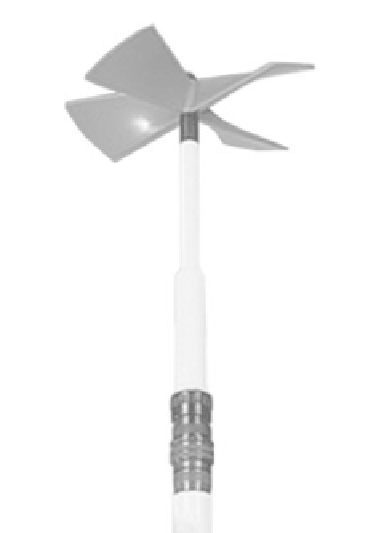Environmental Engineering Reference
In-Depth Information
with standard instruments. By directly measuring the vertical component of the wind,
the energy-producing horizontal component can be better estimated. In addition,
vertical wind speed measurements can be an important input for turbine loading
and suitability calculations, as severe or frequent off-horizontal winds can cause
damaging loads and wear.
Two common approaches for measuring the vertical wind speed are to mount a
propeller anemometer with its axis pointed vertically (Fig. 4-6) or to use a sonic
3D anemometer. Whichever approach is taken, since vertical winds can vary greatly
with height above ground, it is recommended that the anemometer be placed as close
to hub height as possible without causing interference with other sensors (a vertical
separation of 1-2 m between sensors is usually adequate).
Since vertical motions are often very small, an anemometer of unusual sensitivity
is called for. A propeller anemometer requires a transducer that can indicate both
upward and downward motions. The signal is usually a direct current (DC) voltage
whose sign and magnitude are interpreted by the data logger (or an interface device).
Sonic sensors are more expensive than propeller anemometers but offer the advantage
of measuring both vertical and horizontal wind components simultaneously and at
precisely the same height and position.
Figure 4-6.
A vertical propeller anemometer.
Source:
R.M. Young Company.












Search WWH ::

Custom Search